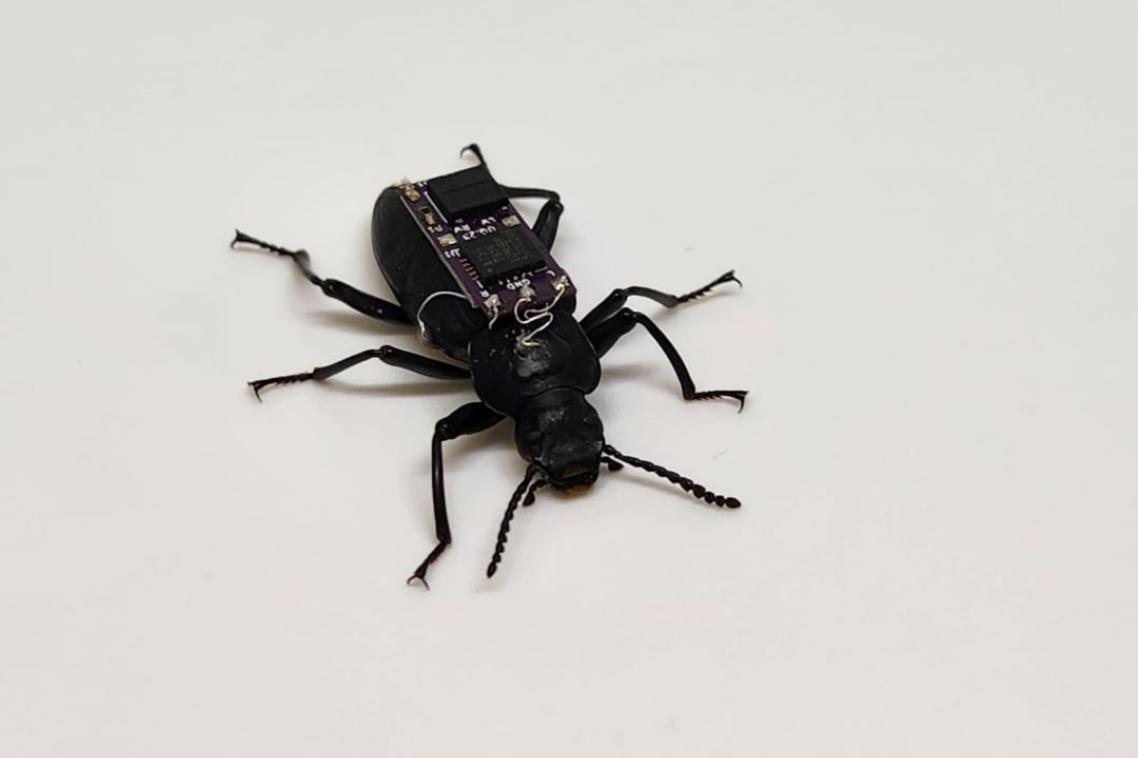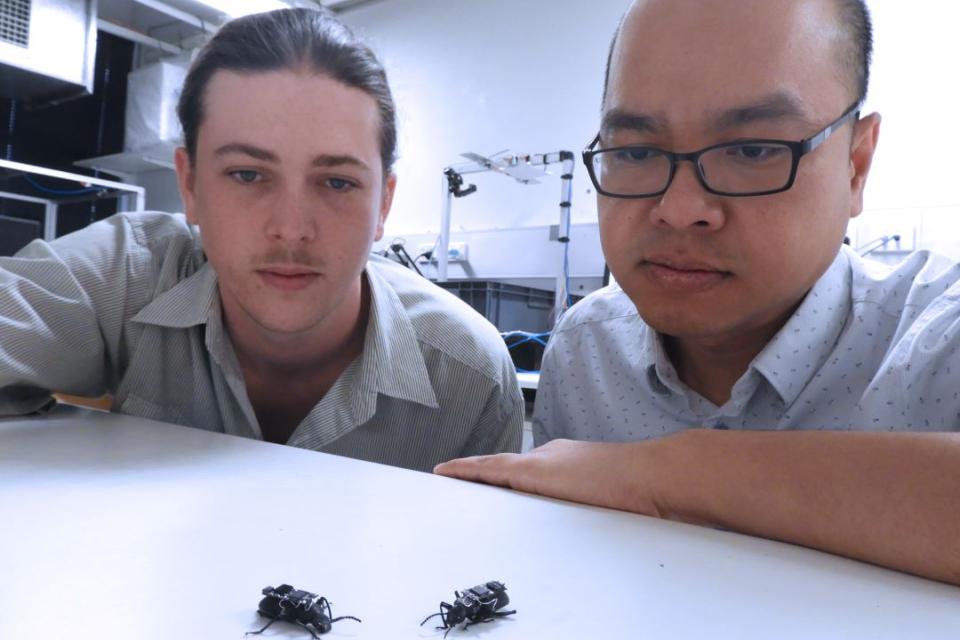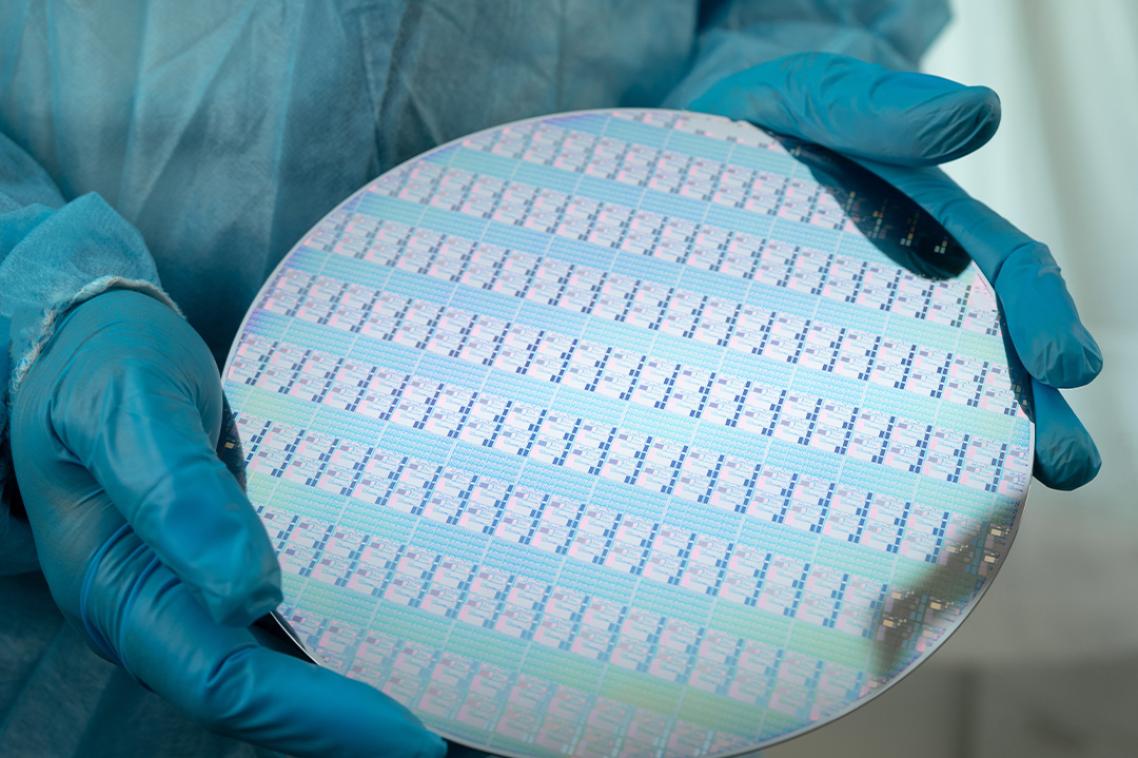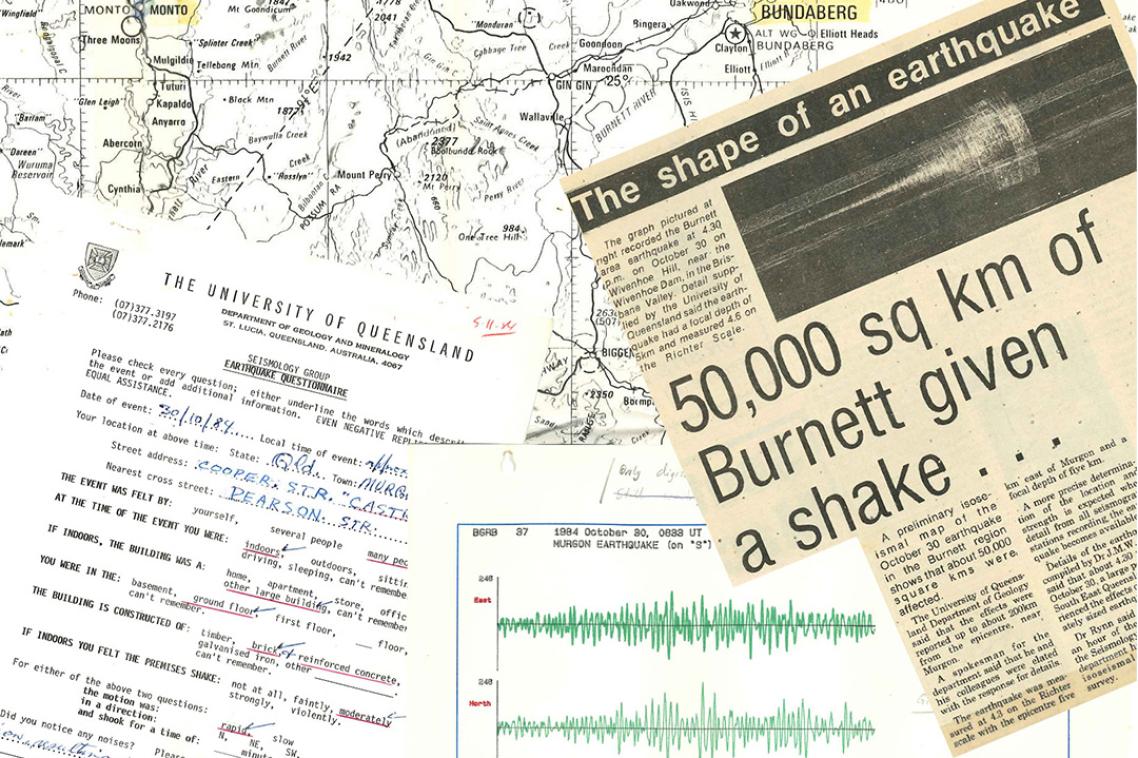‘Cyborg’ beetles could revolutionise urban search and rescue

(Photo credit: The University of Queensland )
Key points
- UQ researchers have shown they can remotely guide the movement of common darkling beetles using a video game controller.
- The beetles are fitted with removeable microchip backpacks that use electrodes to stimulate the insect's antenna or hardened forewings.
- The programmable controls allow for precise directional guidance without affecting the lifespan of the beetle.
The University of Queensland’s Dr Thang Vo-Doan and Research Assistant Lachlan Fitzgerald have demonstrated they can remotely guide darkling beetles (Zophobas morio) fitted with the packs via video game controllers.
Dr Vo-Doan said the removeable backpacks prompted movement in specific directions through electrodes that stimulated the insect’s antenna or hardened forewings known as elytrons.
“Beetles possess many natural gifts that make them the masters of climbing and manoeuvring in small, complex spaces such as dense rubble, that are difficult for robots to navigate,” Dr Vo-Doan said.

Biorobotics researchers Lachlan Fitzgerald and Dr Thang Vo-Doan.
(Photo credit: The University of Queensland)
“Our work harnesses these gifts and adds programmable controls that allow for precise directional guidance without affecting the lifespan of the beetle.”
The long-term project involves a team of researchers at the UQ Biorobotics lab in the School of Mechanical and Mining Engineering who hope to test the technology in a live situation within 5 years.
Mr Fitzgerald said the latest research, showing the beetles could be guided to move side-to-side and up vertical walls, was a collaborative effort with UQ's School of the Environment, the University of NSW and Singapore’s Nanyang Technological University.
“While robots at this scale have made strides in locomotion, the transition from horizontal surfaces to walls remains a formidable challenge for them,” Mr Fitzgerald said.
“This difficulty arises from the need for active foot pads, soft environmental interactions, and sophisticated sensing capabilities – all things that our cyborg insects possess naturally that allows them to access any area that is required in a disaster environment.”
Dr Vo-Doan said while a tethered power supply had been used for the climbing test, the beetles had also demonstrated the ability to climb with a battery equivalent to its own body weight.
The team is refining designs to allow for cameras and a compact and efficient power system to enhance the beetle’s mobility and versatility.
“If people have been trapped under an extensive amount of rubble, you want to be able to find them as quickly as possible and start planning how to get them out,” Dr Vo-Doan said.
“We hope to produce a tool that can easily move through chaotic environments to pinpoint a person’s exact location, provide clues to any injuries and give rescuers a picture of what needs to be done to free them.”
The research is published in Advanced Science.
Topics
Related articles

Superconducting germanium made with industry-compatible methods

